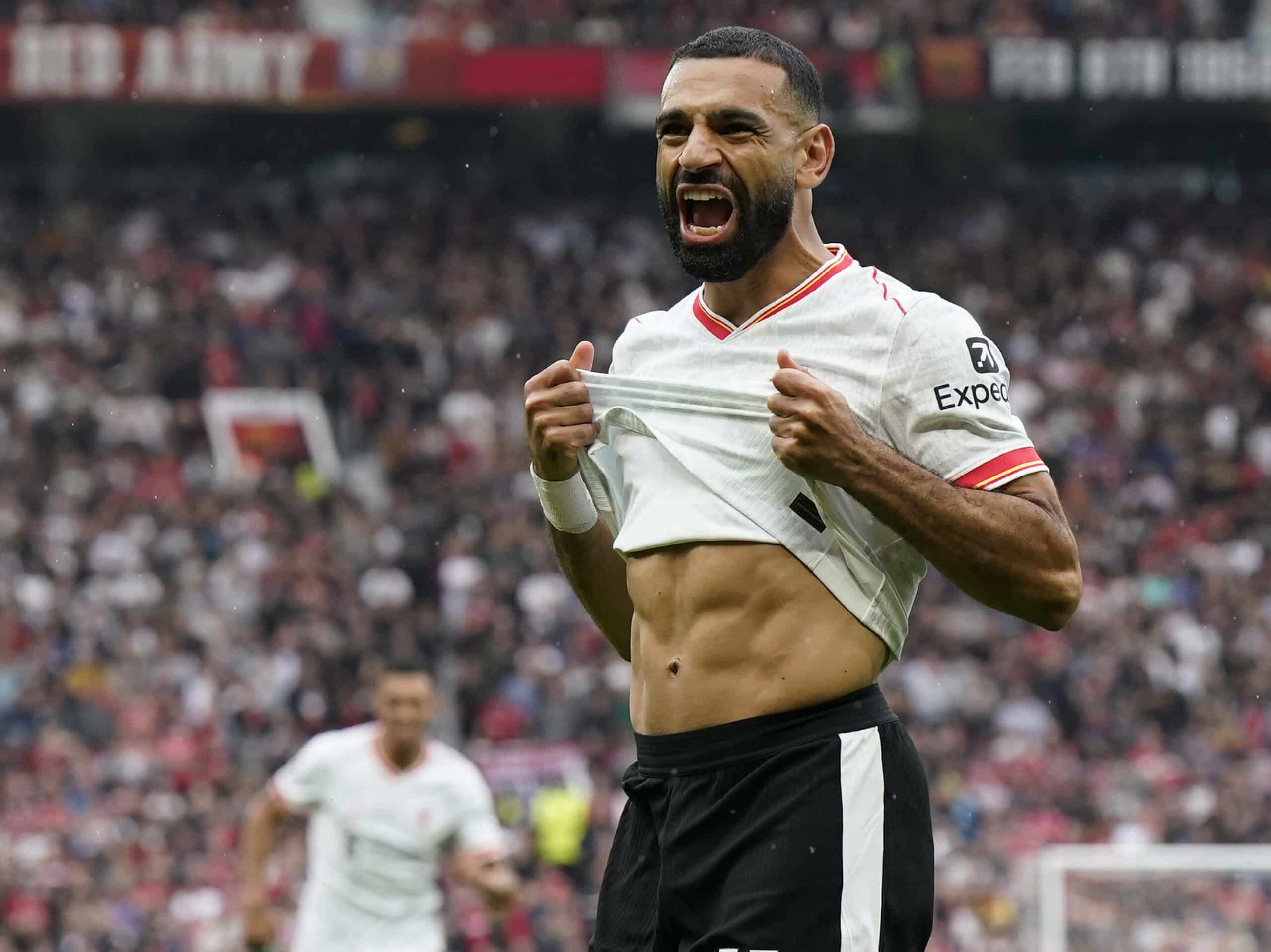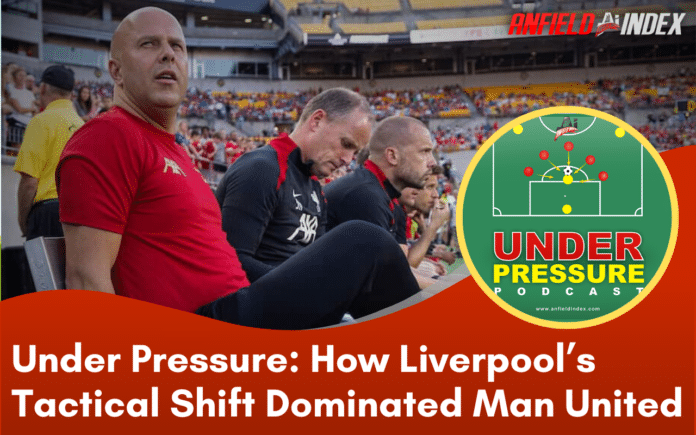Dominance at Old Trafford: How Liverpool Overpowered Manchester United with Tactical Brilliance
The recent 3-0 victory of Liverpool over Manchester United at Old Trafford has been hailed as a masterclass in tactical execution. In a performance that highlighted the tactical acumen of Arne Slot and his coaching staff, Liverpool not only dominated the game but did so with a level of control that left Manchester United chasing shadows. This article delves into the key strategies employed by Liverpool, as discussed by Dan Kennett, Simon Brundish and Hamzah Khalique-Loonat in the latest episode of the Under Pressure podcast on Anfield Index.
Liverpool’s Tactical Setup: Subtle Shifts and High-Pressing Efficiency
Liverpool’s approach to the game was characterized by subtle yet impactful tactical shifts, particularly in midfield positioning and pressing strategies. As Simon Brundish noted, “The first very obvious deliberate one was that [Dominik] Szoboszlai, who usually plays right half-space, was switched to the left half-space, drifting into the 10.” This shift allowed Liverpool to adjust their pressing, funneling Manchester United into less dangerous areas and enabling the Reds to win the ball back in more advantageous positions.
Brundish further emphasised the effectiveness of Liverpool’s press, stating, “We were our press was designed to push them out, so that they had to recycle back from their fullbacks into dangerous spots.” This strategy forced Manchester United to constantly play out from the back under intense pressure, often resulting in turnovers in critical areas of the pitch.
Manchester United’s Vulnerabilities: Tactical Misstep
On the other side, Manchester United’s setup under Erik ten Hag was riddled with vulnerabilities that Liverpool exploited with ruthless efficiency. Hamzah Khalique-Loonat described United’s structure as “really strange,” highlighting how their 3-1-6 formation often left them exposed at the back. “Ten Hag likes to play a very transitional game… but it also means that if you’re going to play a very transitional game, the ball’s going to come back at you a lot of the time,” Hamzah noted.
This lack of defensive solidity was a recurring theme throughout the match, with Liverpool capitalizing on United’s high-risk approach. As Hamzah pointed out, “Liverpool noticed that and they really went for it.” The result was a series of high-pressure situations where Liverpool’s attackers found themselves in one-on-one scenarios with United’s defenders, leading to numerous goal-scoring opportunities.
https://twitter.com/AnfieldIndex/status/1831055349539065979
Statistical Mastery: Breaking Down The Numbers
The match statistics further illustrate Liverpool’s dominance. According to the podcast discussion, Liverpool outperformed Manchester United in several key metrics:
Possession: Manchester United had 52% possession, but Liverpool’s 48% was more impactful, particularly in dangerous areas.
Shots: Liverpool managed 11 shots to United’s 8, with all three of Liverpool’s shots on target resulting in goals.
Expected Goals (xG): The xG metric was 1.7 for Liverpool compared to 1.4 for Manchester United, highlighting the quality of chances Liverpool created.
Expected Threat (xT): Liverpool’s expected threat was 0.8 compared to United’s 0.7, reflecting Liverpool’s more dangerous attacking play.
Dan Kennett summed up the first half by stating, “In that first half split, it was 50/50 possession… but we had four shots to two, four penalty box shots to two, two big chances to nil, and two goals to nil.” These statistics underline how Liverpool effectively killed the game within the first 42 minutes, leaving United with little chance of a comeback.

Key Performances: Luis Diaz and Mohamed Salah Shine
One of the standout performers in this match was Luis Diaz, whose contributions were crucial in Liverpool’s attacking play. As Hamzah pointed out, Diaz has been a “plus finisher” this season, with three goals from an expected 1.8, highlighting his clinical nature in front of goal. “Goal or assist in the Premier League every 55 minutes this season,” Hamzah noted, a testament to Diaz’s growing influence.
The relationship between Diaz and Mohamed Salah was also a key factor. Hamzah elaborated on this by saying, “The relationship with Salah is there… Salah’s passing to him is crucial.” This connection was particularly evident in the second goal, where Salah’s outside-of-the-foot pass set up Diaz for a composed finish, a move that demonstrated both players’ high footballing IQ.
Statement of Intent From Liverpool
Liverpool’s 3-0 victory over Manchester United was not just a win; it was a statement of intent. Through tactical brilliance, efficient pressing, and clinical finishing, Liverpool demonstrated why they remain one of the most formidable teams in the Premier League. As the Under Pressure podcast analysis reveals, this performance was a perfect blend of strategy and execution, leaving Manchester United with much to ponder.
Liverpool’s ability to adapt and exploit the weaknesses of their opponents, as well as the growing synergy between key players like Salah and Diaz, bodes well for the challenges ahead. If this match is any indication, Liverpool fans can look forward to more masterclasses like this in the season to come.




